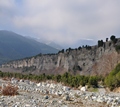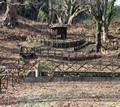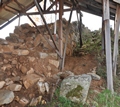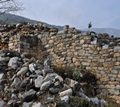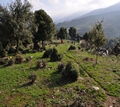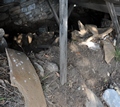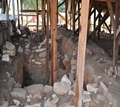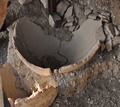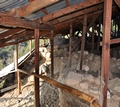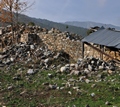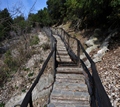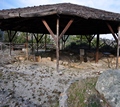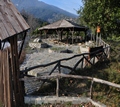
Levithra, a famous ancient city with an acropolis, the birthplace of the mythical Orpheus, is built between Old Leptokarya and Skotina, at the entrance of the great fold that separates Kato from Upper Olympus. In the area, successive streams flow that contribute to the common bed of the stream of Ziliana.
The archaeological site has a total area of over 1500 acres, includes the city, the acropolis, the cemetery, etc., while it is surrounded by the riverbeds covered by centuries-old plane trees. It is a continuation of the declared historical and archaeological site of the Mount Olympus and includes:
The walled ancient Acropolis, (covering approximately 15 acres) which seems to have been abandoned in the Hellenistic years. Part of it has collapsed into the bed of the Griva stream, while on the other sides the ancient enclosure, built with angled stones, is preserved.
Ancient settlement that stretches on the heights northwest of the Acropolis. The habitation was continuous from probably prehistoric times up to Byzantine times.
Ancient Cemeteries of various periods, from prehistoric to Hellenistic (Mycenaean, Early Iron Age and historical times).
During the excavation, parts of mudstone walls, interior floors, exterior cobblestones, and coins and figurines were discovered.
Plutarch mentions that there was a wooden statue of Orpheus made of cypress in the city. Tradition also says that Orpheus must have been born, lived or died here or in the neighboring city of Pimbleia.
The city was, according to Strabo, at the foot of Mount Olympus near Pimblia which in turn was near Dion. The same source also mentions that it was built "on Olympus" and indeed in the southernmost part, where the mountain turns from Thessaly and faces Macedonia. The ancient city was completely destroyed when the river Sys flooded.
Editor: Fotini Anastasopoulou










